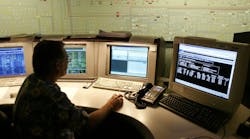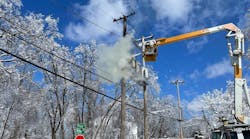History has shown us (although it took a crisis of such proportions as COVID-19 to evoke change) that each crisis has served as a pivot point wherein businesses and industries that adapted and adopted innovative solutions and processes have set themselves up for long-term success.
COVID-19 is Changing the World and Our Lives
The last few months, and especially weeks, have been momentous in our collective history as a species and has resulted in a humanitarian crisis that has fundamentally altered our daily lives and gravely impacted the global economy. Every worst-case scenario previously forecast has failed to grasp the reality and the new normal precipitated by COVID-19. This ever-changing situation doesn't lend itself well to previously tried-and-tested approaches. The scale, speed, and impact of issues continue to intensify as the situation continues to evolve rapidly. Business leaders around the globe have experienced large-scale business disruptions in the past, but the magnitude and breadth of the present crisis is testing the limits of our collective ability. Using reactive, replacement-based, manual approaches to manage this situation has resulted in an untenable situation for even the most seasoned of business operators.
The Utilities Industry is Impacted for Several Reasons
- Transmission and distribution assets are spread across a large geographic area.
- System-dependent sensing devices are attached throughout the network. Systems such as supervisory control and data acquistion (SCADA) deliver the data into the control centers. However, not much sensing is available at the feeder level beyond the substation even though this is also increasing.
- Utilities are also facing serious threats related to outdated grid infrastructure exacerbated by the integration of renewable energy sources.
- Utilities have an aging workforce with replacement talent not easily available.
The COVID-19 situation is further exacerbated because manual intervention in the field is still required. Utility field crews cannot stay at home and work from home.
Many times, knowing in a timely manner that a problem exists is itself an issue. Once the problem is identified, technicians need to go to the field, locate the problem device or problem location, diagnose the problem, fix the problem, and restore the system back to normal.
What Should the Utility Do?
Discussions with utility business leaders are taking on a heightened sense of urgency. Eliminating or reducing manual intervention effort involved in one or more of the aforementioned steps will help utility field crew reduce their exposure to the elements as well as to other people who could be either symptomatic of the virus or carriers. The benefits of this reduction to personnel would only complement the savings.
On top of the urgency created by the virus, discussions have quickly and markedly shifted to intelligent asset management using mobile, cloud-based remote operations solutions performed by a mobile connected worker who can use a combination of remote asset tracking, monitoring, analytics, and real-time insights to perform decisive actions to keep the grid reliable and resilient.
What Does the New Normal Look Like?
- Remote monitoring, alerting and notifications: A platform designed and built to remotely discover, collect data, and continuously monitor the health of devices/sensors/equipment. Why send people to do this when you do not have to? At least send people only when absolutely necessary based on actual data and monitoring. And, more importantly send the right people with the right capability, the right tolls, and the right spare parts to fix the problem correctly the first time.
- Remote service and control: When possible, service a piece of equipment by securely controlling it remotely without using manual labor.
- Predictive and preventative maintenance: Use pattern recognition and anomaly detection based on real-time and historical data, and artificial intelligence (AI) to predict and prevent potential failures.
- Intelligent servicing: Use actual equipment usage, seasonality, cyclicality, population density, equipment age, equipment failure patterns, and a host of signals to determine when and how to service equipment. No more servicing simply based on static schedule.
- Compliance: Auto-map data into compliance insights and reports.
Key Takeaways
Operational leaders are finding that resorting to just-in-time, reactive approaches to maintain operations is no longer enough. They must rely on proactive decision-making using real-time data and insights to drive decisions about how to run their businesses while keeping their employees safe and healthy.
Utility operators need the ability to function and collaborate in a decentralized manner with access to real-time information and insights. This will require an increased number of sensors in the distribution system beyond the substation. In addition, remote access to data will enable efficient and effective decision-making, which will bring about a systemic and seismic shift in the way operations are managed. Access to timely, trustworthy information from all operational assets will be required in a manner that is easy to analyze and take decisive action.
Utilities may need to look for service providers to build a solutions architecture to help operators make critical decisions effectively and efficiently, and allow them to meet their very specific needs.
Reference Reading
- Mani Vadari, Smart Grid Redefined: Transformation of the Electric Utility, published by Artech House, March 2018
- Mani Vadari, Electric System Operations — Evolving to the Modern Grid, 2nd edition, published by Artech House, January 2020
- Jake Varghese, Sridhar Chandrashekar, Mani Vadari, IoT: The Electric Grid’s Final Frontier, T&D World, Jan 2020
- Mani Vadari, Making the Case for Utility Transformation, Energy Central/Intelligent Utility, March 2018
- Mani Vadari, Distribution Automation: The Path to a Self-Healing Grid, reference article, July 2016, Engineering and Technology Reference, www.ietdl.org


